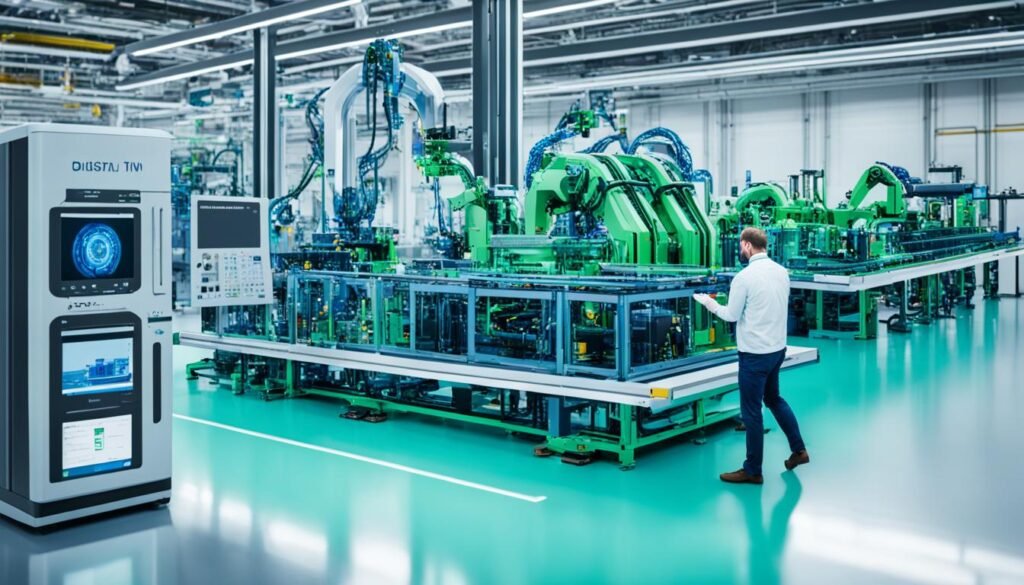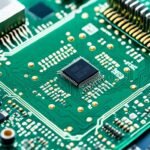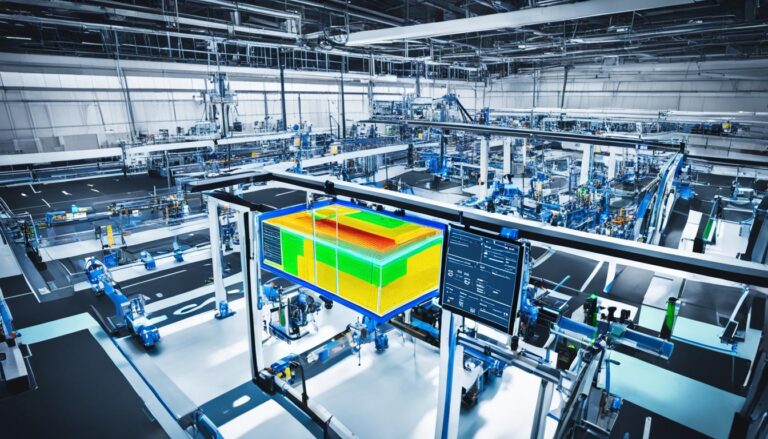realme NARZO 70 Turbo 5G (Turbo Yellow,6GB RAM,128GB Storage) | Segment's Fastest Dimensity 7300 Energy 5G Chipset | Motorsports Inspired Design
₹16,998.00 (as of December 22, 2024 20:33 GMT +05:30 - More infoProduct prices and availability are accurate as of the date/time indicated and are subject to change. Any price and availability information displayed on [relevant Amazon Site(s), as applicable] at the time of purchase will apply to the purchase of this product.)Today’s manufacturing market is highly competitive. To keep up and succeed, businesses need to adopt digital twin technology.1 These innovative tools help meet the growing demand for personalized goods, quick production, and top-notch quality.1 However, starting with digital twins might feel daunting at first. This guide is here to help. It’s designed for manufacturers like you to smoothly enter the world of digital twins or improve your current setup.
This guide will equip you with the knowledge and insights you need. Whether you’re at the beginning of your digital twin journey or looking to enhance what you’ve already begun, this is your essential resource.
Key Takeaways
- 69% of manufacturers currently leverage digital twin technology1
- 97% of manufacturers think digital twin solutions are important to their organization1
- The digital twin market is expected to reach $35.8 billion by 2025 and grow at a CAGR of 38.2% from 2020 to 20251
- Unplanned downtime costs industrial manufacturers up to $50 billion a year, and shutdowns can eat up to 1% to 10% of production time1
- A typical plant spends $100 million to $400 million a year on maintenances1
Unleashing the Power of Virtual Replicas
The digital revolution across industries has made the digital twins concept stand out. This technology changes how businesses work. A digital twin is a digital model of an asset, process, or system. It creates a virtual copy used to boost innovation, increase efficiency, and enhance performance.2
What is a Digital Twin?
Essentially, a digital twin is a digital replica of a physical entity. It shows all its features and how it behaves. This model acts as a link between the real and digital worlds. It lets organizations simulate, analyze, and improve their functions without real-world limits.3
Understanding Digital Model and Instances
A digital twin model explains the key parts of an entity, like its parts, connections, and actions. Creating a unique copy from this model defines a digital twin for that particular entity. This difference is important to see how digital twin technology is versatile and powerful.2
Discrete and Composite Digital Twins
There are two kinds of industrial digital twins: discrete or atomic digital twins and composite digital twins. Composite twins join several discrete twins to model a complex entity. This category further breaks into assembly twins for components and system twins for an entire system’s interactions and actions.34
What makes digital twins so valuable is their ability to represent things at various levels. They can show individual pieces or complete systems. This helps organizations truly understand their operations and resources.23
Revolutionizing Operations with Digital Twins

A digital twin breaks down barriers between different parts of a company.1 It gets data from various places and brings it together. This makes everything work together better without the usual information roadblocks. The use of a digital twin improves how we connect and use business data.5
Real-Time Monitoring and Control
Digital twins provide a live look at what’s happening and make suggestions.5 With this, companies can act quickly on issues and improve how they work based on real-time insights. This smart monitoring and control let manufacturers fine-tune their operations on the spot.
Simulation and Experimentation Capabilities
They also allow for safe experimenting.5 Manufacturers can try out changes on the digital model, not the real item. This is great for making sure updates or fixes work smoothly without any real problems. Using digital twins for testing makes finding better ways of working easier and less risky.
The Ultimate Resource Guide to Digital Twins in Manufacturing
This guide helps manufacturers understand digital twin technology. It gives them the knowledge they need to make smart choices. Whether you’re just starting or want to improve your setup, this guide is your best friend. It covers how digital twins can change manufacturing. You’ll learn about virtual replicas, predictive analysis, real-time monitoring, and more. This info will help you compete and succeed in today’s fast-changing market.1
The digital twin market is set to hit $35.8 billion by 2025. It’s growing fast, with a yearly growth rate of 38.2% predicted.1 Already, 69% of manufacturers use digital twins. And 97% see them as crucial for their success.1 Now, 71% are investing more in this tech. Even those not using it yet, 85%, are thinking about trying it soon.1
Unplanned downtime is a big problem, hitting 82% of companies in the past three years.1 On average, manufacturers suffer 800 hours of downtime yearly. This adds up to over 15 hours a week.1 The cost is high – around $50 billion a year for manufacturers.1 But digital twins can help cut these costs. They make operations more efficient, reduce maintenance bills, and boost sustainability. This is why 92% of manufacturers say digital twins have made their work greener.1
As manufacturers get more into digital twins, they’ll see big benefits. This guide is here to make sure you know how to use this technology. By making the right choices, your business can lead in the age of the Industrial Internet of Things and smart manufacturing.
Harnessing AI and Machine Learning

The manufacturing sector is evolving fast. Digital twin AI and digital twin machine learning are now key. They help companies stay competitive and improve their operations. With digital twins and these advanced tools, manufacturers can use real-time analytics, predictive analytics, and prescriptive analytics. This enhances decision-making and their performance.6
Real-Time Analytics for Anomaly Detection
Digital twins with real-time analytics can watch data from machines and systems. They catch problems fast. This means companies fix issues before they become big troubles.7
Predictive Analytics for Decision Support
Digital twins not only predict but also provide valuable insights. This helps engineers make smarter choices. They can improve how things are made, spot machine issues early, and plan maintenance ahead of time.8
Prescriptive Analytics and Recommendations
Digital twins can do more than predict. They can suggest what to do. By using complex models and smart technology, digital twins guide decisions. They help companies meet their goals by giving clear data-based actions.7
Using digital twin AI and digital twin machine learning boosts efficiency. It also offers better decision support and clear guidance. This brings a strong edge in the competitive manufacturing world.687
Integrating Blockchain Technology
Digital twin technology and blockchain bring huge benefits to the manufacturing world. They boost trust, make things clearer, and help people work better together.9 By teaming up with digital twins, blockchain opens the door to easier shared data, safe dealings, and clever automation through smart contracts.10
Storing Digital Twin Data on Distributed Ledgers
Blockchain’s use in digital twins shines when it comes to keeping digital twin data safe.9 It uses the power of many connected computers to store information safely, making sure it can’t be changed, and keeping it secure as it moves between tasks.10 This method fights against data isolation, making it easy for information to flow without losing its reliability.
Enabling Smart Contracts Between Digital Twins
Blockchain does more than just store data. It also lets digital twins make agreements with each other or with other systems.10 These digital deals can happen on their own, offering clear, fair, and automated ways for digital twins to interact, making manufacturing even smoother and more connected.9
Adding blockchain to digital twins opens up exciting new possibilities. It means better ways to manage shared information and to make deals that benefit everyone.9 This mix of tech has the power to tackle old problems, bring in new ideas, and push manufacturing towards a future that’s safer, more open, and where teamwork is key.10
Applications Across the Product Lifecycle
Digital twins change how products live their full life, offering big benefits all along. They cover everything from the start of design to making it better, easier, and predicting when fixes are needed.1 This new tech is really making a difference for makers.
Digital Twins for Product Design and Development
When it’s time to design and develop, digital twins make things smoother and quicker. They spot problems early and let you fix them fast. This means new products hit the market faster and better.1This faster process can boost profits up to 10% and make products 25% better (McKinsey & Company).
Digital Twins for Production Planning and Optimization
For planning and making things better, digital twins are a game-changer. They let makers watch in real time, simulating and predicting to make smarter moves fast. This leads to smoother processes and continuous improvement.1 Twin techs can cut the time to launch by half.
Digital Twins for Predictive Maintenance
Digital twins don’t stop there. They’re shaking up how we handle maintenance too. By using real-time facts and smart algorithms, they predict when machines might fail.1 This smart maintenance can slash surprise stops and fix costs by a big chunk, as 62% of makers saw.
Also, 73% are wasting less and using energy better thanks to digital twins.1
By fitting digital twins from start to finish, makers can really step it up. With it, they get ahead in being better, faster, and greener. This new tech is guiding the future of making things smart.
Conclusion
This guide has shown how digital twins change manufacturing. They use advanced technologies like AI and blockchain. This helps manufacturers improve their work, make more products, and bring new ideas.11
Digital twins are helpful from designing products to keeping them working. They solve many industry problems. As more companies use this technology, they’ll become more competitive, efficient, and eco-friendly.1213
Manufacturers can use this guide to adopt digital twins successfully. It offers useful information and strategies. By following these tips, companies can lead the digital change. This leads to making more, spending less, and making customers happier.
Source Links
- https://www.infotech.com/research/ss/digital-twins-in-manufacturing
- https://medium.com/@Web3R/unveiling-the-power-of-digital-twinning-revolutionizing-industries-6d2aad04f27c
- https://www.slideshare.net/slideshow/the-power-of-digital-twins-a-comprehensive-guide/266657963
- https://www.rtinsights.com/digital-twins-and-the-next-generation-simulation-engine/
- https://www.dataparc.com/blog/digital-twin-manufacturing/
- https://www.toobler.com/blog/digital-twins-in-manufacturing
- https://xmpro.com/
- https://processgenius.eu/the-ultimate-guide-to-digital-twin-for-manufacturers/
- https://www.mdpi.com/2071-1050/15/4/3713
- https://www.ncbi.nlm.nih.gov/pmc/articles/PMC10248332/
- https://converged.propelsoftware.com/blogs/digital-twins-the-complete-guide-for-manufacturing-leaders
- https://www.toobler.com/blog/digital-twin-in-manufacturing
- https://www.wwt.com/article/digital-twins-in-manufacturing-separating-hype-from-reality







0 Comments